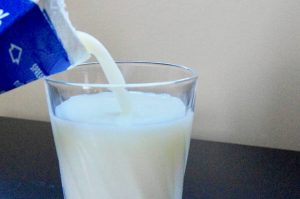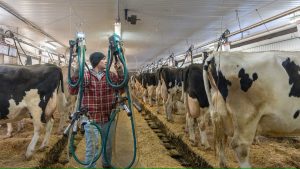
The entrepreneurial spirit is alive and well in the dairy industry. Unprecedented interest in unique and artisanal offerings has spurred dairies and cheesemakers to explore new product lines. And as demand for specialty products ramps up, many turn to their equipment suppliers for more efficient ways to manage production — and expand capacity.
“Plant expansions are always driven by the market,” says Dominique Roberge, director of engineering, Qualtech. “When a product becomes popular, dairies must often install new lines very rapidly to meet contractual obligations with retailers.”
Over the past 25 years, Qualtech has implemented more than 150 cheese plant expansions in Canada and the United States. Headquartered in Quebec, Qualtech provides stainless-steel equipment, process engineering, and turnkey project implementation for pharmaceutical, food, and dairy applications. The company’s expertise in cheese processing technology encompasses the complete manufacturing line — from milk intake through curd transformation and molding.
Combination of automated and manual processes
“The cheesemaking process always starts the same way,” says Roberge. “Incoming milk is transferred from milk tanker to silo, pumped into the pasteurization system and then distributed to the various process steps.”
New dairy processing facilities are typically a combination of automated and manual processes. A smaller operation may have automated high temperature/short time (HTST) pasteurization and clean-in-place (CIP) systems, but use a manual process to route the milk through other steps.
“For example, we helped Skotidakis Goat Farm establish its plant about 15 years ago,” says Roberge. “At the time, a completely automated system was not appropriate for the artisanal cheese and yogurt maker.”Conventional flow panels featuring “swing” elbow connections were used in milk receiving and to fill and empty fermentation tanks. Dairy flow panels feature a main supply port at the center, with additional ports surrounding it.
Milk is diverted to specific process steps through single-seat valves within the ports. To transfer milk, an operator manually connects the correct port to the supply port and stops and starts the flow on a push-button interface.
Additional flow panels and valving are required for cleaning solutions used in CIP systems.
Limited system visibility
While the flow panel configuration initially served the Skotidakis dairy well, challenges mounted as capacity increased.
“The operators had limited visibility into the process,” Roberge explains. “Changeovers were more frequent. The system did not include proximity sensors, so there was no easy way to verify that elbow connections were in place correctly.”
As a result, an operator starting a sequence might soon discover that milk had run down the drain or had been diverted to the wrong tank.
In addition, as product mix grew from Greek yogurt and feta cheese to a line of dips, spreads, and ricotta so did the overall complexity of the system.
Unifying the plant
“Bringing new products online was challenging using the manual system,” said Roberge. “As Skotidakis began making plans for a new feta cheese line, they contacted us for an automated solution that would encompass their entire plant and improve operations.”
To modernize the plant, Qualtech chose a control system based on a Rockwell Automation platform featuring Allen‑Bradley CompactLogix controllers and Allen‑Bradley PanelView graphic terminals. Allen‑Bradley PowerFlex 525 and 753 AC drives control pump and mixing applications. The solution is integrated on an EtherNet/IP network.
To optimize fluid routing, Qualtech automated the milk receiving process and replaced the existing flow panels with 200 mix proof valves. Mixproof valves enable the flow of both milk and CIP solution through the same valve simultaneously without risk of cross-contamination.
“Mixproof valve clusters save significant space and minimize system complexity,” Roberge says. “Plus, the valves are intelligent.”
Sensors detect if the valve is open or closed and if sequences are validated through the control system. No manual connections are required.
The multiphase plant expansion and modernization also feature a range of new Qualtech equipment, including silos, fermentation tanks, a Greek yogurt separator, an automated feta molding line, filling machines, and CIP and HTST systems.
Better control
“Today, every phase of production at the Skotidakis plant is automated and can be controlled from the HMI or a tablet,” Roberge said. “Our dairy plant expansions and control system modernizations typically deliver significant benefits.”
In this case, Skotidakis reduced operator error by 95%, increased productivity by 20%, and improved its yield.
“By utilizing Qualtech to upgrade our plant’s automation, we have consistently improved our yields and fewer complications occur,” says John Skotidakis, president and CEO, Skotidakis Goat Farm. “These enhancements have allowed our plant to increase our customer base and maximized our efficacy.”

























